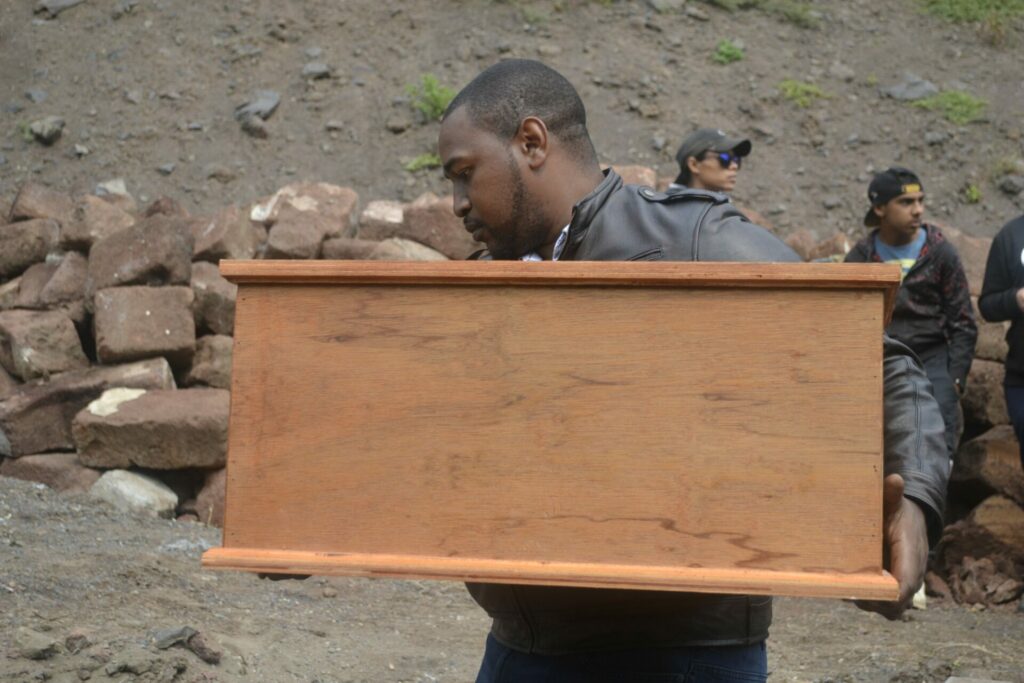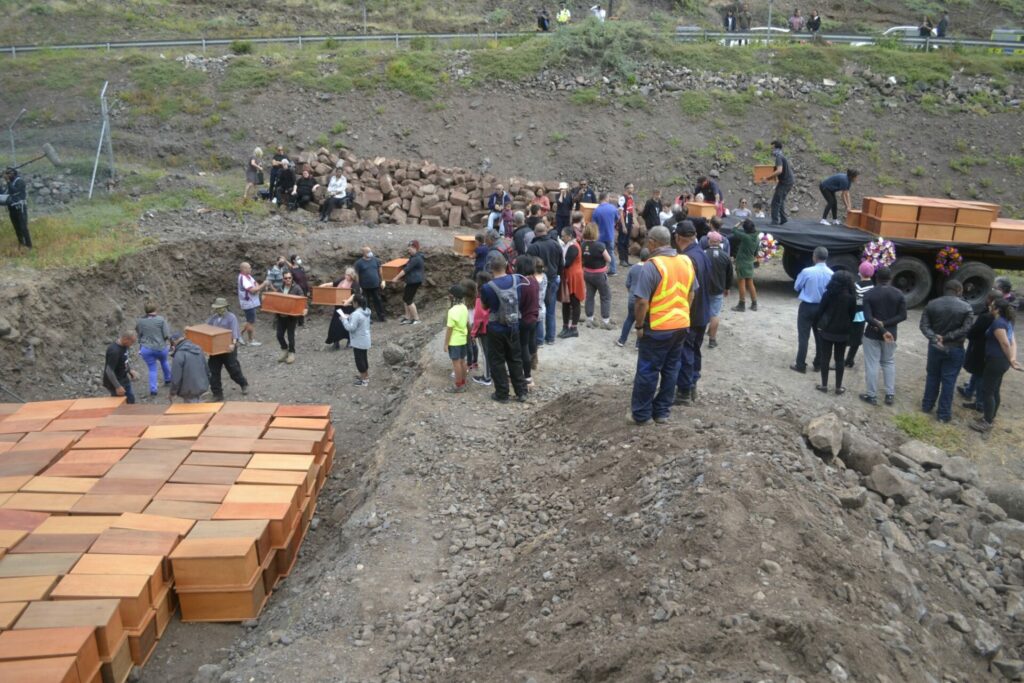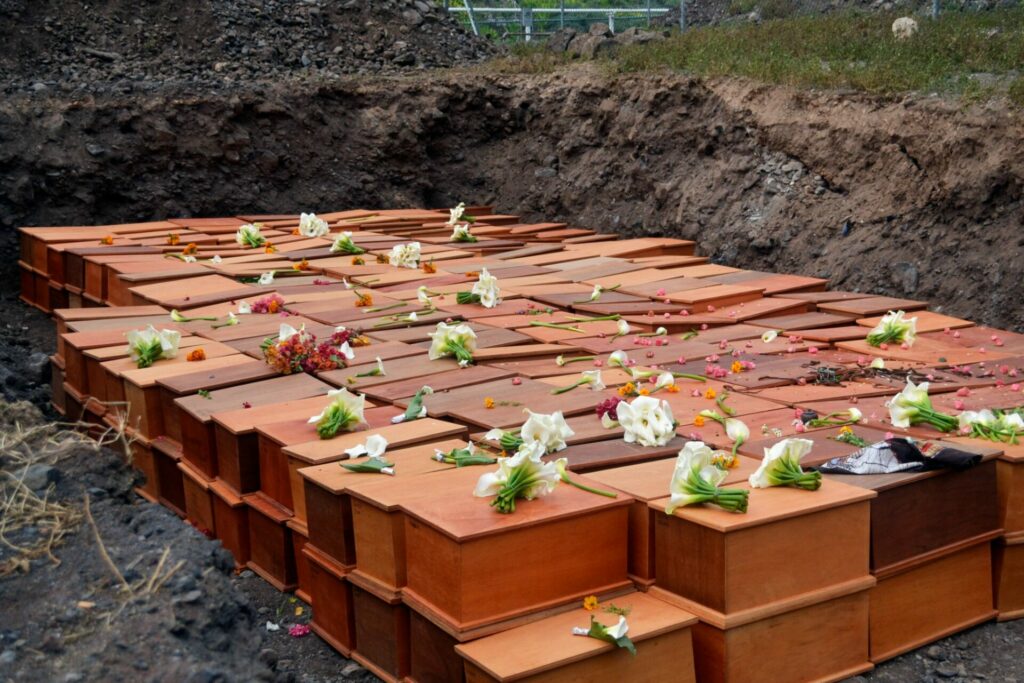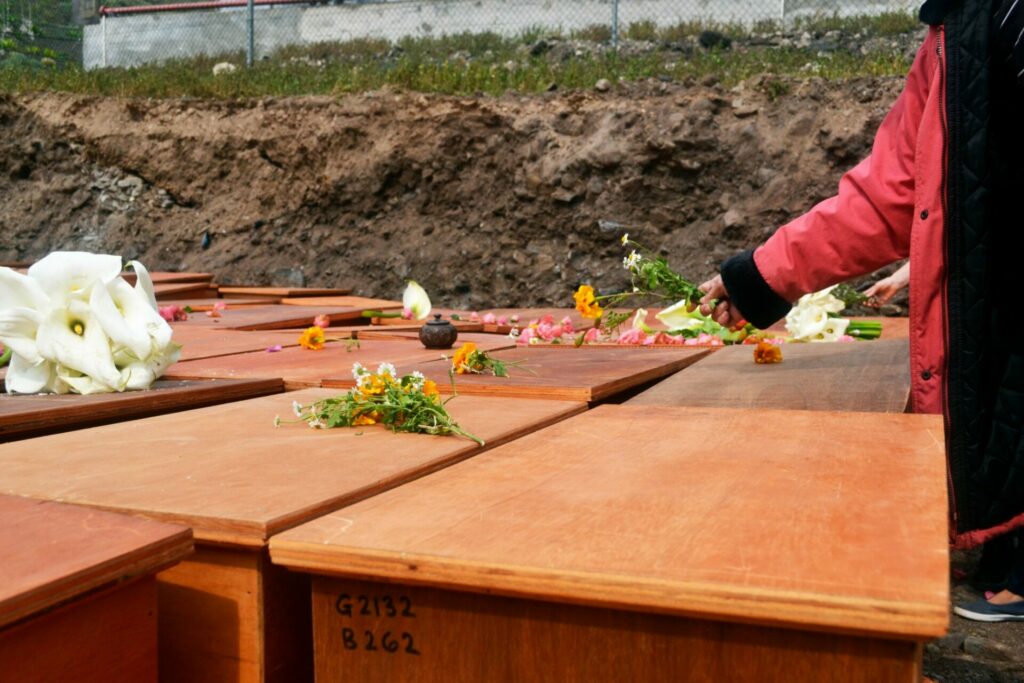The struggle for preservation of historical burial grounds of enslaved Africans

Recently, the St. Eustatius Afrikan Burial Ground Alliance sent out a press release about endangered historical burial grounds of enslaved people on St. Helena and on St. Eustatius, a Dutch island in the Caribbean that has been a special municipality since 2010. In the press release, Alliance president Kenneth Cuvalay discusses the struggle for the protection of marginalised African heritage. The St. Eustatius Afrikan Burial Ground Alliance arose from the protests against the excavation of an eighteenth century burial ground of enslaved Africans on St. Eustatius, which was started in June 2021 by a team of international archaeologists. The initiator of the protests was Ubuntu Connected Front (UCF), a political party that participated in the 2021 general elections and became the largest party on St. Eustatius with over 50 percent of the votes. The Alliance has since grown into a movement that has contacts with other groups fighting for the preservation of African historical cemeteries. Recently, the Alliance also issued a manifesto. Below is the full text of the press release.
Kidnapped, trafficked, liberated, died in a quarantine camp and no rest even after death: that is the story of 325 Afrikan men, women and children who were ceremonially reburied on St. Helena over the weekend of 20/21 August. They are part of the forgotten history of the ‘liberated’ Afrikans of the trans-Atlantic slave trade.
Dit artikel in het Nederlands.
Namibian environmental and cultural heritage consultant Annina van Neel has been concerned for years with the fate of the 325 men, women and children. She has fought for respectful treatment and for the reburial of their exhumed remains. Archaeological digs during the construction of St Helena’s airport in 2008 uncovered their remains and for nearly a dozen years, they were stored in boxes in a stock room of an old prison. Now they are finally getting the respect and peace they deserve.

Impressive ceremony at the end of a lonely battle
The ceremonies on August 20 and 21 were dignified. On August 20, the coffins containing human remains were ceremonially reburied. On August 21, in a gathering of hundreds of attendees, poems, speeches, silence and music were shared near the mass grave. At the end of the ceremony, each attendee could tie a white ribbon to a tree. A permanent memorial has not been provided yet. Not everyone on St. Helena is equally pleased with the attention given to the mass reburial. Annina van Neel encountered a lot of opposition over the years. The documentary “A Story of Bones” that premiered at New York’s Tribeca Film Festival in June this year, tells her story. A story linked to the sad fate of the Afrikan men, women and children who thought they had been liberated and returned home.
St. Helena as a depot of ‘liberated’ Afrikans in the 19th century: How a silent disaster happened
The mass reburial marks St. Helena’s pivotal role in ending the trans-Atlantic slave trade in the nineteenth century. After Britain’s ban on slave trade in 1807, the British Royal Navy began patrolling the Atlantic, intercepting slave ships that violated the ban. The abducted Afrikans aboard these ships were taken to St. Helena between 1840 and 1872. More than 25,000 supposedly liberated Afrikans have thus set foot on St. Helena. But they were not returned to their country of origin in Afrika. Some were shipped further to the Caribbean islands to work on the plantations. Thousands died in the quarantine camps along the hills of St. Helena in Rupert’s Valley, unprotected from sun and wind and with few amenities. It seriously tarnishes the reputation that the United Kingdom likes to claim as the initiator and ‘watchdog’ of the abolition of transatlantic slave trade.

Forgotten history: the fate of marginalized communities
About 8,000 men, women and children are still buried anonymously on the island. St. Helena thus houses the greatest physical reminder of trans-Atlantic slave trade. It is the largest burial ground of enslaved Afrikans in the world. As is often the case with marginalized communities, this important part of their history has been largely forgotten and little recorded. Even the Dutch Wikipedia does not mention it. The island of St. Helena is best known as Napoleon’s place of exile.
Endangered historical slave cemeteries on Dutch territory
The Netherlands has a similar marginalized history from the time of trans-Atlantic slave trade. On St. Eustatius, once the largest transit port in the Western Hemisphere for slave trade, the St. Eustatius Afrikan Burial Ground Alliance fights for the respectful treatment of their excavated ancestors from the former Golden Rock plantation. They also want protection for the Godet cemetery, heavily affected by erosion, and the ruins of the nearby slave depot, the Waterfort. Kenneth Cuvalay, President of the Alliance, said: “Slavery has been identified as a crime against humanity by the United Nations and the European Parliament. The cemeteries on St. Helena and St. Eustatius are therefore important cultural heritage of the Afrikan diaspora community. A place to commemorate and say “never again” together.”

What is needed to protect marginalized heritage
The St. Eustatius Afrikan Burial Ground Alliance has been working closely with St. Helena for the past year as well as with Peggy King Jorde, specialist in the field of marginalized heritage and involved in the creation of the African Burial Ground Memorial in New York in 1990. King Jorde has also worked with Annina van Neel on St. Helena and, like Van Neel, is co-producer of the documentary ‘A Story of Bones’. Their expertise is invaluable to St. Eustatius.
Cuvalay: “The local government on St. Eustatius says it has no expertise or resources to do justice to this important cultural heritage. We want to create awareness at the Ministry of Education, Culture and Science and the heritage sector for the fact that the Afrikan cultural heritage on St. Eustatius exceeds the local interest. Due to slavery and colonization, the indigenous and Afrikan diaspora communities worldwide have lost the rights to their heritage. The Alliance wants moral will, expertise and resources to be made available to protect their heritage and have a say in it.”
Kenneth Cuvalay
